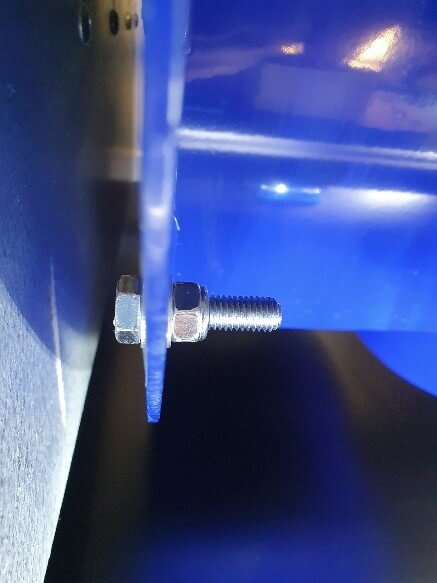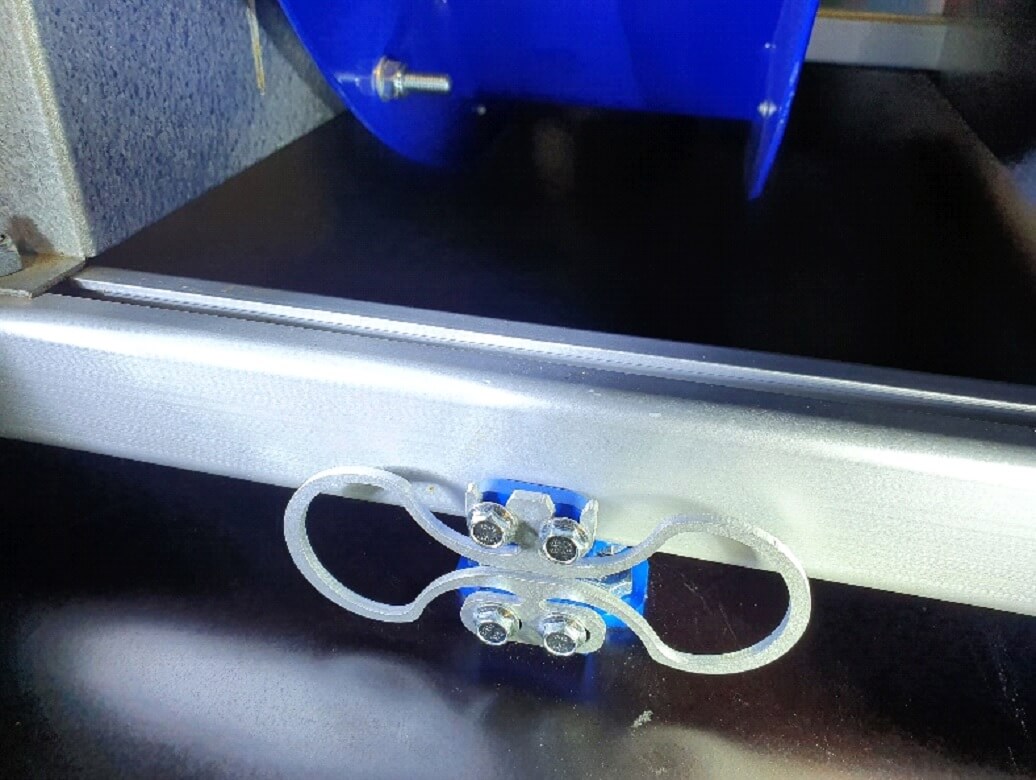14.09.2020
Fan Introduction
Test case fan is equipped with 3HS20 InfiniSpring®-springs and with a 2.2 kW electric motor, which is controlled via variable-frequency drive. Motor nominal speed is 1440 rpm. This article focuses on testing the fan with big unbalance to see which rigid body modes are harmful for the fan installation. A fan with a big impeller unbalance mass (extra bolt) is shown in Figure 1 below.

Figure 1. Fan impeller with big unbalance mass.
Completed Test
The fan was tested with a big unbalance mass in different rigid body mode (flexible installation natural mode) resonances by setting the motor speed to measure natural mode frequency of the flexible installation. In practice the fan speed was set first to fan longitudinal mode frequency 4.5 Hz (270 rpm) and fan vibration levels were checked. After this, the speed was raised to fan transversal mode frequency 4.75 Hz (285 rpm) and again fan vibration levels were checked. This was continued all the way up to the last natural mode. In total there are always six degrees of motion (3 translation degrees of freedom and 3 rotating degrees). Below are shown six tested rigid body natural modes and their frequencies.

Test with big unbalance
The test revealed that only transversal and vertical natural modes are excited with big unbalance. Other rigid body natural modes are not excited. Below is a video showing the fan is speeded up from 0 Hz to vertical mode 9.5 Hz (570 rpm) with a very big impeller unbalance. The fan vertical rigid body mode is excited heavily in the vertical direction.
With InfiniSpring® vertical rigid body mode always has a higher natural frequency compared to transversal rigid body mode. Due to this, the vertical rigid body mode defines the minimum operating frequency for the fan. For the fan that was tested, the vertical rigid body mode is 9.5 Hz (570 rpm) and transversal rigid body mode is 4.75 Hz (285 rpm).
Conclusions
Based on the test transversal and vertical rigid body modes for the fan are excited with big unbalance. They are therefore the most harmful rigid body modes. Other rigid body modes are not excited.
Vertical rigid body mode frequency is always higher than transversal mode frequency. Due to this, the vertical rigid body mode frequency is used for dimensioning InfiniSpring®-springs for a fan, and it also defines the fan minimum operating frequency.
Datasheet values can be used to define minimum operating frequency. The datasheet defines the minimum rotational speed, e.g. 3HS20 InfiniSpring® is for rotational speeds above 755 rpm (12.6 Hz). The rpm value can be found from the datasheet.
P.S. In this case, the fan can be operated safely in a speed range from 755 rpm up to the speed allowed by the fan or motor.
P.P.S. With the balanced fan, none of the rigid body modes were excited and it was safe to operate the fan from 0 rpm upwards.




